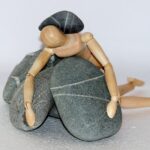Cannabidiol has become one of the most popular natural remedies in recent years. The legalization of cannabis in many regions has only contributed to increase its popularity, not only in the areas where cannabis is legal but also in other places where is not. Because cannabidiol or CBD derived from hemp is legal at a federal level. Although CBD is fairly safe to use, there are some things that you should take into account before you use it. In this article, we are going to tell you all you need to know about CBD interactions.
What You Need to Know Before Using CBD
If you are new to CBD or are considering using it, there are some things that you must know before using it for the first time:
- CBD or cannabidiol is found in the cannabis plant, but it can also be extracted from the hemp plant, which is an industrial variety of cannabis sativa.
- Contrary to THC, CBD does not have any psychoactive effects, so it won’t get you high.
- CBD does not cause addiction.
- Cannabidiol has little or no side effects. Any potential side effect will disappear after discontinuation of treatment.
- CBD acts in the cannabinoid system of mammals, allowing it to relieve pain, stimulate appetite, relieve anxiety among other properties.
- The substance is safe to use in humans and pets. However, if you want to give CBD to your dog or cat, it is recommended to use products specifically formulated for them.
- You can buy CBD in various formats, including oils, topicals, and edibles.
- Cannabidiol won’t show up in drug tests.
- CBD may interact with other substances, so you should learn CBD interactions to use it safely.
Is Cannabidiol Safe?
As we said, cannabidiol or CBD is a fairly substance to use. And, according to a report from the World Health Organization (WHO), it does not appear to have abuse potential or cause harm.
On the other hand, CBD can be used by most individuals, as it has little to no side effects. Most times, unpleasant effects appear after a very high dose is administered, but this is not usual. However, if any side effect arises, it will disappear if you reduce your dose or after you stop using it.
To prevent any unpleasant effects from happening, it is recommended that you start on a low dose. So, you can start with 1-2 drops under your tongue if you are using CBD oil (or the equivalent if you are using edibles). If you don’t feel any effects, you can increase the dosage after a few hours.
There is no universal dosage of CBD, and every individual (or animal) responds differently to it. That’s why it is important to start low and to keep track of your dosage to learn how you react to it. On the other hand, keep in mind that most studies dosages range anywhere between 20-1500mg per day. So, you shouldn’t go above it.
CBD Interactions
Like every drug, medicine, or herbal remedy, CBD can interact with other substances. But before digging into CBD interactions, you should know what drug interactions mean. Drug interactions happen when 2 substances are taken together, and they provoke one of the following effects:
- reduce the effects of the other substance
- increase or potentiate the action of the other substance
- provoke unwanted side effects
- alter the way that the other substance work
To prevent this from happening, it is important to know the most common CBD interactions as mentioned in this article published in Medium. So, let’s review them below:
- Research has shown that CBD may alter the way that anticoagulant medicines work. Specifically, a study performed in a 44-year-old man who was given warfarin and CBD (along with other medications) suggested that CBD may increase the effects of warfarin by prolonging the presence of this drug in the body. For this reason, the use of CBD in conjunction with anticoagulant medicines should be closely monitored.
- Since CBD acts on the cannabinoid receptors of our system, providing relaxation, it is believed that CBD may increase the effects of sedative medicines. However, more research is needed to prove this.
- One of the most common uses of CBD is to reduce seizures. A study performed in 1992 found that low doses of CBD could result in more aggressive seizures due to prolonged concentration of antiseizure drugs (specifically clobazam and norclobazam).
- Chemotherapy drugs may also be affected by CBD, but it’s not clear how.
However, a lot of research is still needed regarding CBD interactions. For this reason, it is important to consult with a doctor before using CBD and other substances together.
What Is CBD Used For?
Now that you know the most common CBD interactions and how to use it safely, it’s the time to know if cannabidiol is the right product for you. Typically, people use cannabidiol for one or more of the following purposes:
- reduce pain
- relieve stress and anxiety
- sleep better
- stimulate appetite
- reduce seizures
- combat social anxiety
Additionally, CBD has been reported to have the potential to combat glaucoma and to reduce nausea caused by chemotherapy treatments. At the same time, it has antioxidant and anticancer properties.



